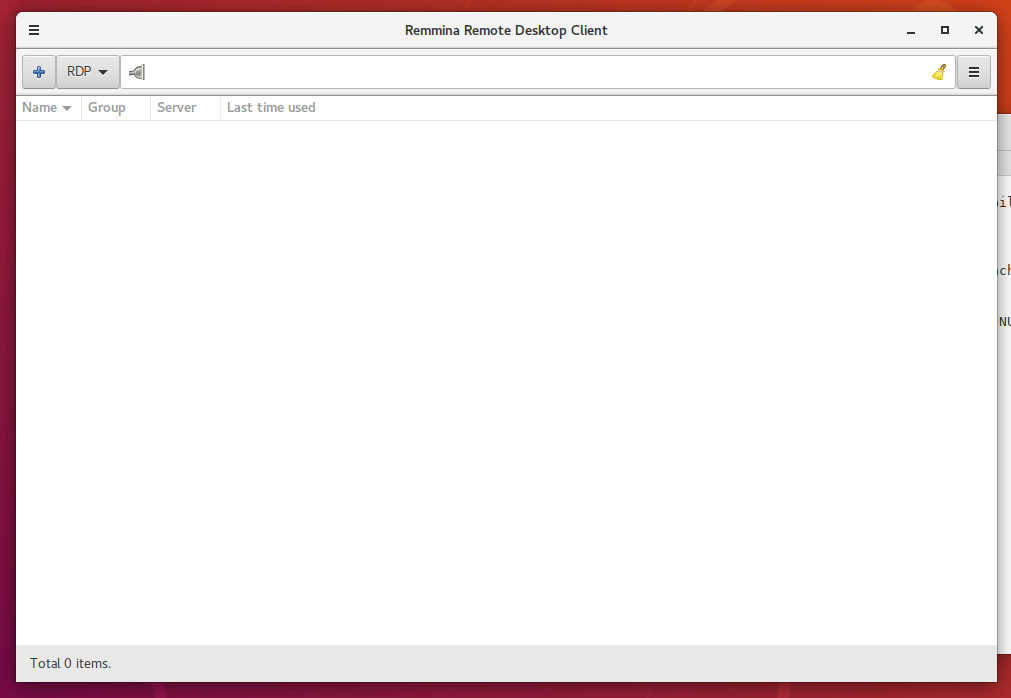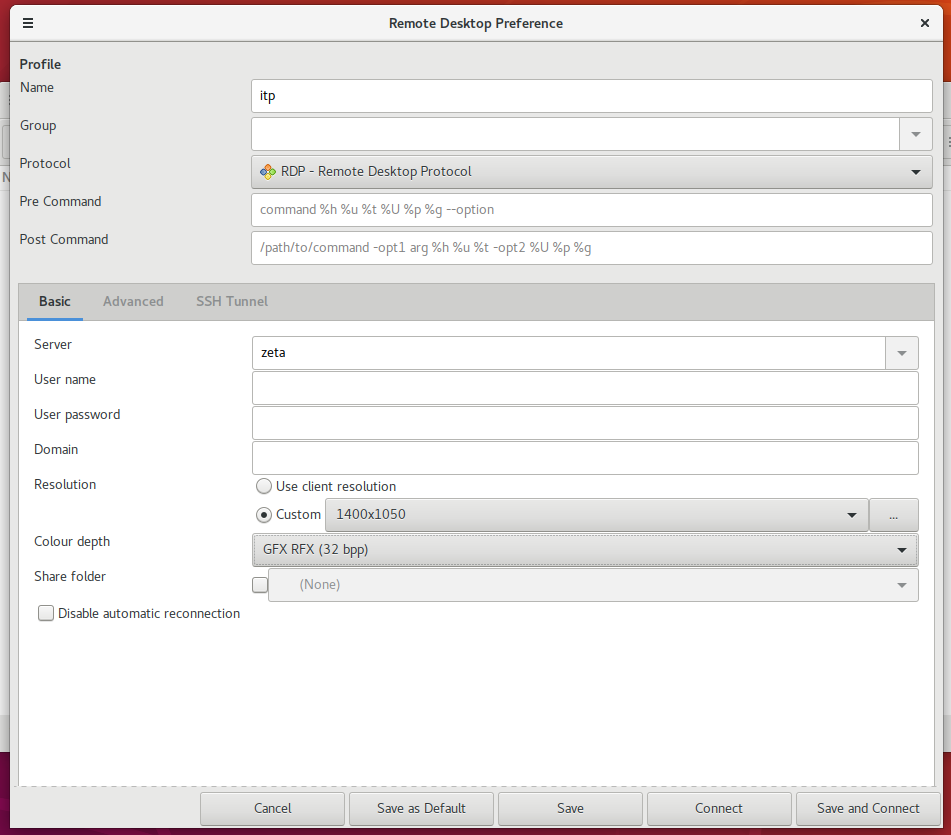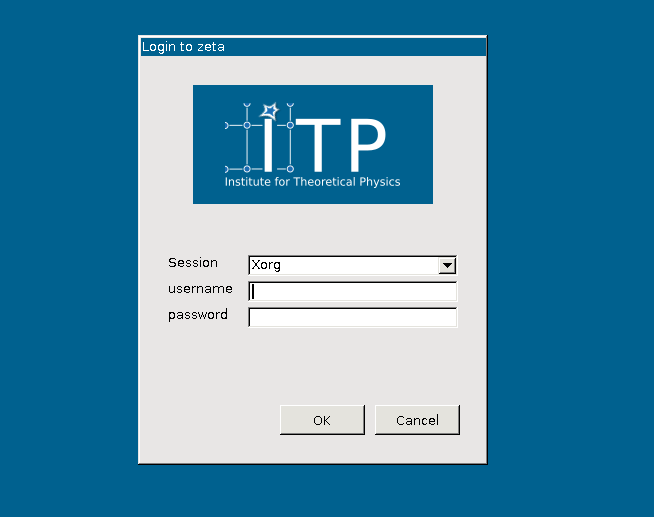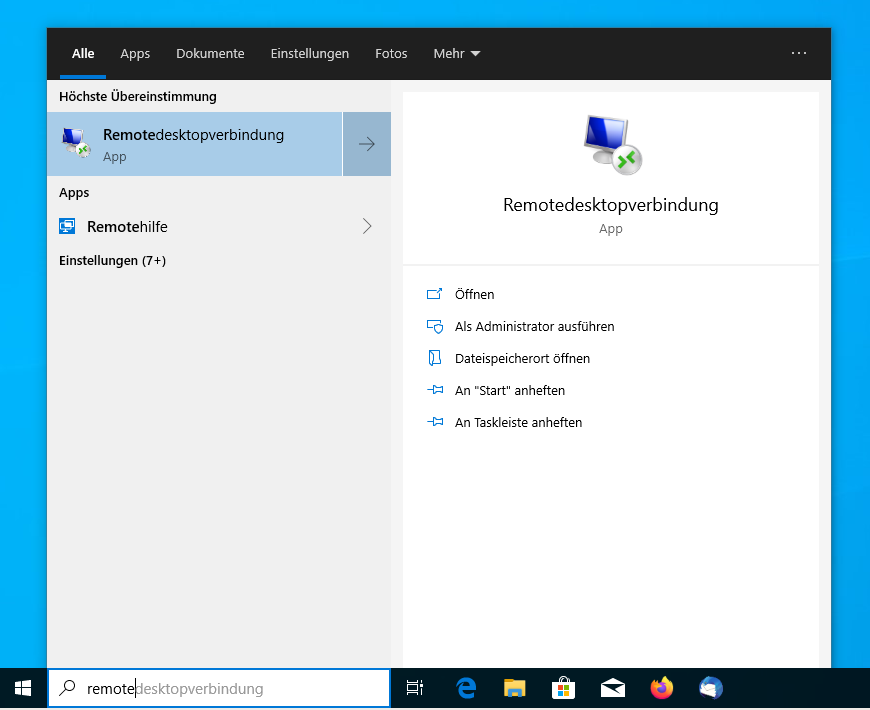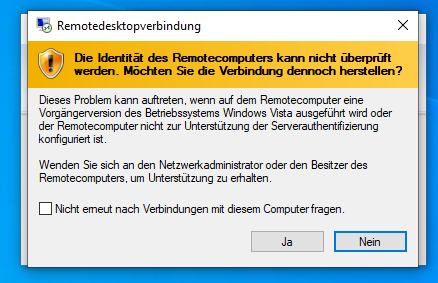Graphical Remote Login with xrdp
Attention!! This article is still in progress!
If you are using a Linux desktop system or Windows 10, then you remotely login into a Linux session on our main login server zeta. For macOS this should work similar to Linux, but is not tested.
To use this service you first need to connect to our VPN. For openvpn this is described here [1] and for the use with Networkmanager here [2].
If you disconnect from a xrdp session (on purpose or by a network error), you can reconnect to the same session in the next 24 hours. To completely end a session you need to log out inside of your xrdp session instead of interrupting the connection. All session, which are not connected for over 24 hours, are automatically terminated.
Contents
Connect using remmina (Linux, macOS)
If it is not already installed on your system, install the xrdp client remmina (sudo apt-get install remmina). Other clients like vinagre should work to.
Before you can connect with remmina, you need to establish a vpn-connection to itp.
Open remmina.
In remmina do not directly connect, as the connection does not work with the standard settings. Instead click on the plus sign in the upper left corner to set a new connection.
In the new window choose a 'Name' for your connection and in the line 'Server' you need to enter 'zeta'. Choose a custom resolution.
In the section 'Colour depth' you need to choose another entry. The options 'GFX AVC444' and 'GFX AVC420' do not work. Choose one of the other options.
After saving your setting, should have a new entry in your remmina main screen. Double click on this new entry to connect to establish the xrdp connection.
After a few seconds you should get the following login screen.
Now you can log into a graphical session running on the login server zeta. This normally start a gnome session. If you want another window manager please read the corresponding section on this page further down.
Set the window manager (Linux, macOS, Windows 10)
The window cannot be set by a menu. Instead it is set bin the content of the file '.xsession' in your home directory of your itp-account. Most likely this file does not exist in your account. If you connect to xrdp without this file in your home directory, then (before starting the window manager) this file is created such that gnome is started as window manager.
You can manually override your '.xsession' to choose another window manager. Here a list of supported window managers and which needs to be the content of the '.xsession':
gnome: gnome-session
kde: startkde
xfce: xfce4-session
lxsession: lxsession -s LXDE -e LXDE
Windows 10
Also for Windows 10 you need first to establish a connection to the itp-vpn.
The rest is very simple. In the window search menu search for 'remote'. In a german Window 10 you start the 'Remotedesktopverbindung' app. In english this should also begin with 'Remote desktop'.
In the next window enter 'zeta' as server. Under options you can change various things as the wanted resolution. But the standard setting also work.
You can click yes in the next window.
Now you should get a login screen where you can log in with your itp account (see the Linux section for a picture).
SSH-Tunnel instead of VPN
Instead of VPN you can also tunnel port 3398 to establish a connection to the xrpd server.
Terminal based ssh-tunnel
Just open a terminal and enter 'ssh -t -L 3389:localhost:3389 yourusername@itp.uni-frankfurt.de', where 'yourusername' needs to be replaced by your itp username. After a successful connection, do not close the terminal as else the ssh-tunnel is closed. In your client software (e.g. remmina) use as server 'localhost' instead of 'zeta'.
